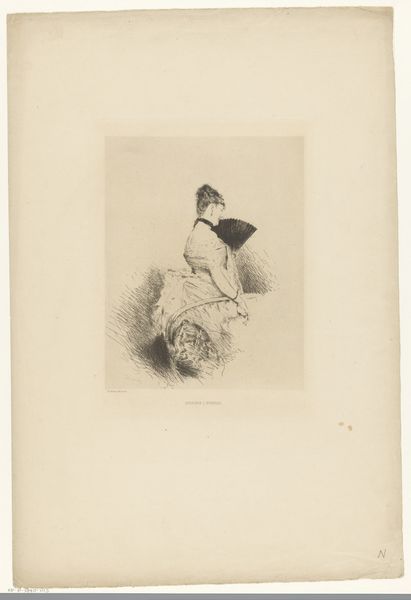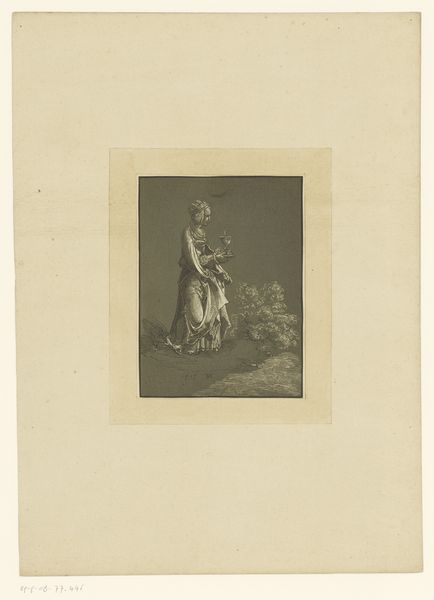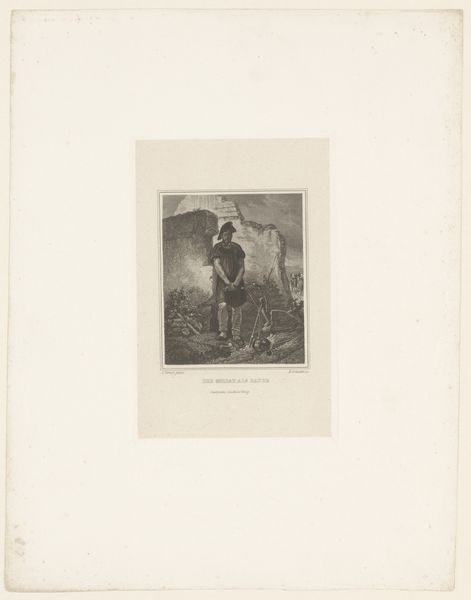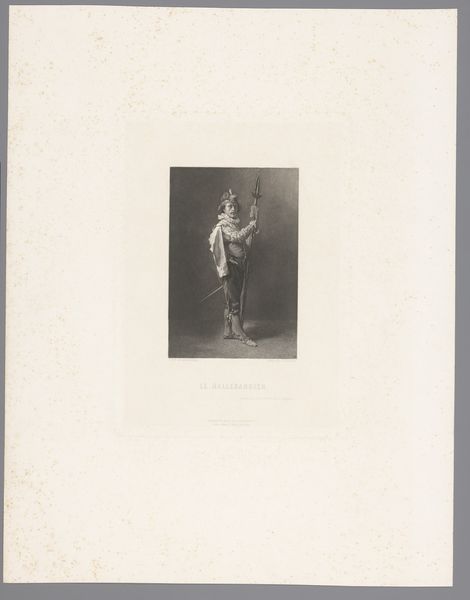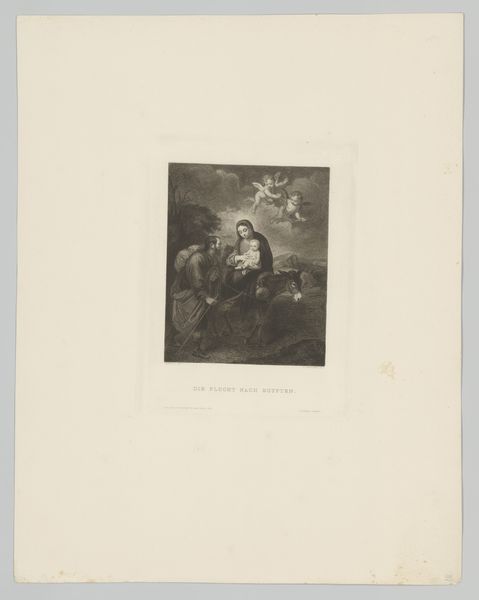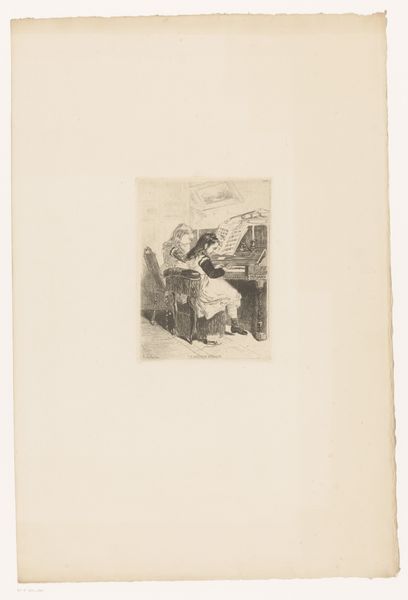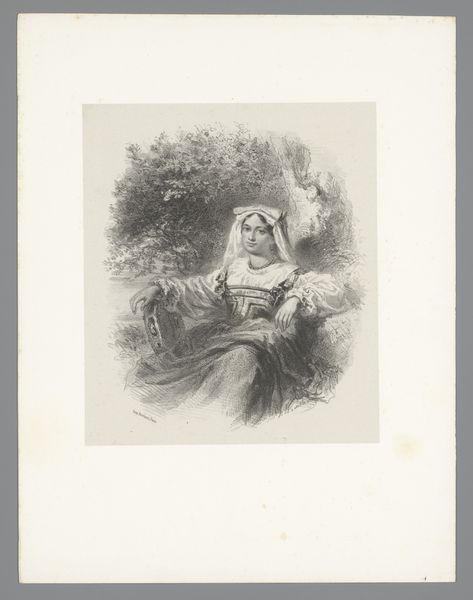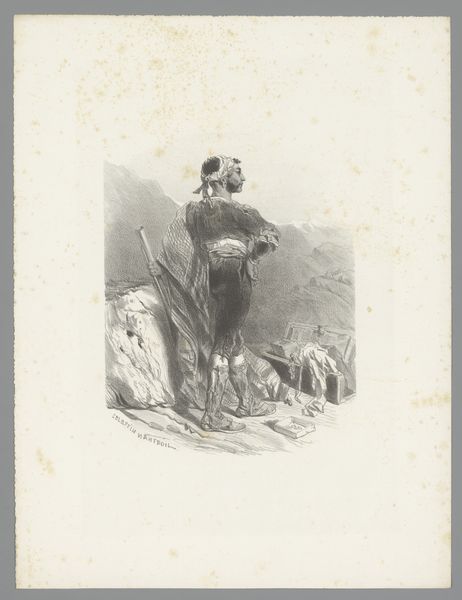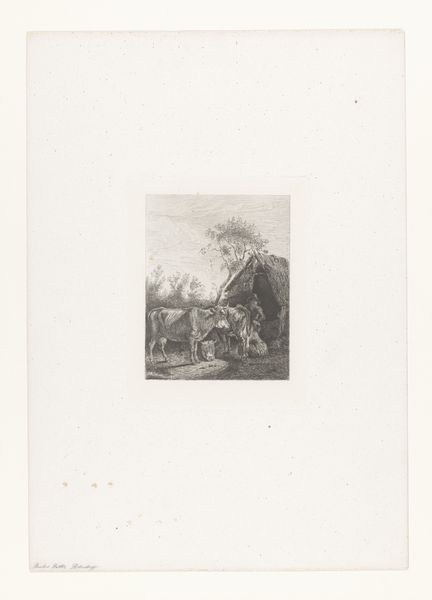
drawing, print, etching
#
portrait
#
drawing
#
16_19th-century
# print
#
etching
#
genre-painting
#
realism
Dimensions: height 240 mm, width 178 mm
Copyright: Rijks Museum: Open Domain
Editor: So, here we have Eleuterio Pagliano's "Pijprokende man in stoel" from 1879, a drawing printed as an etching. There’s a pensiveness that almost feels staged, and that smoke adds a strange element, making the piece seem both contemporary and historic at once. What's your take on it? Curator: It strikes me as a loaded portrayal of masculinity and leisure in the late 19th century. Look at the man’s posture, the way he's reclining, enveloped by that ornate chair. Doesn't it feel like a commentary on class and privilege? Consider how access to leisurely activities, like pipe smoking, was very much stratified. Editor: I see that. But it also seems like a very personal moment; what's the connection there? Curator: Exactly. Realism doesn't merely mirror reality, it mediates it. This etching subtly critiques societal structures by presenting us with an individual whose ease is directly connected to the labor of others, isn't it? Editor: Hmm, so the etching acts as both a window into the period and a subtle social critique. Does the style also contribute to that commentary? Curator: Definitely. The detail in his clothing contrasts with the hazy background, placing emphasis on his individual status but reminding the viewer of his potential isolation within that class structure. Where do you think it takes us today? Editor: That makes the work far more provocative! Thinking about it today, the image resonates with discussions about labor, wealth, and the power dynamics still inherent in those spaces. I initially saw just a moment of reflection, but I realize that that reading ignores how socially constructed this reality is. Curator: Precisely. The challenge is always to peel back the layers of assumptions that shape our interpretations and truly engage with art as a mirror to societal conditions. This is where theory comes alive.
Comments
No comments
Be the first to comment and join the conversation on the ultimate creative platform.

